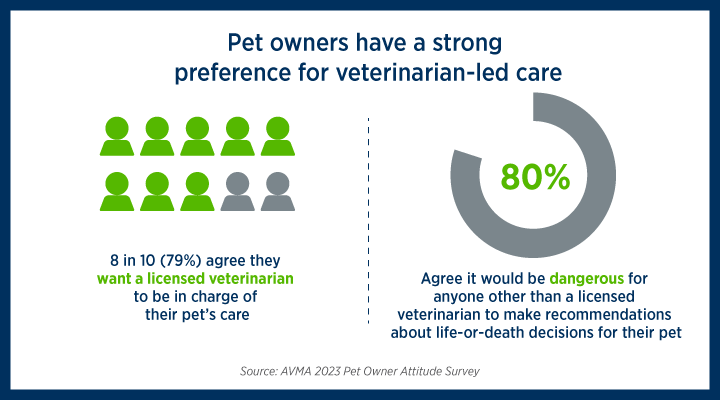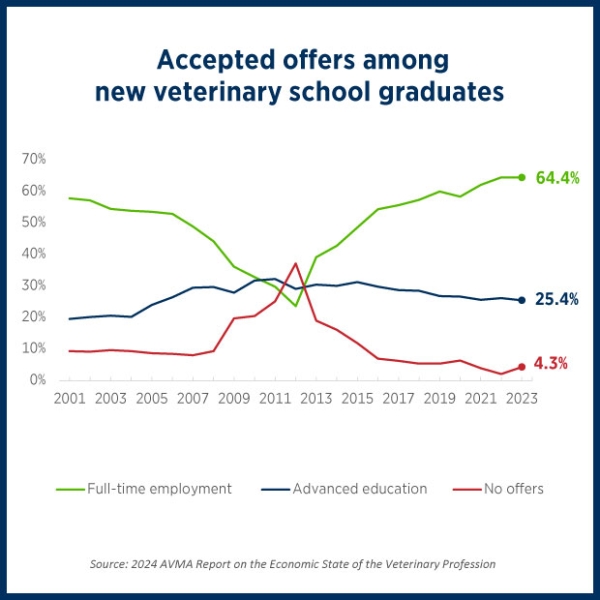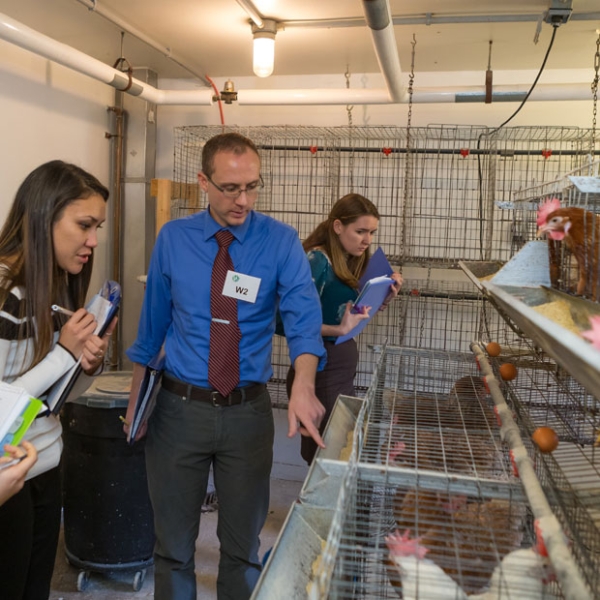Chart of the Month: Pet owners prefer veterinarian-led care
With some states looking into proposals to create a new “midlevel” veterinary position that would overlap the responsibilities of the credentialed veterinary technician and the veterinarian, results from a recent AVMA research study indicate that pet owners would not welcome the change.
The data, from AVMA’s 2023 Pet Owner Attitude Survey, suggest that pet owners would not want a midlevel employee to lead their pet’s care.
What the data show
In the survey of 1,000 pet owners from across the U.S., two sentiments about the proposed position resounded:
- 79% of pet owners agree that they want a licensed veterinarian to be in charge of their pet’s care. Only 7% disagree, and the other 14% have no opinion.
- 80% agree it would be dangerous for anyone other than a licensed veterinarian to make recommendations about life-or-death decisions for their pet.
What does this mean?
The survey results reinforce that a new midlevel position is not a solution to the staffing challenges faced by some veterinary practices.
Most pet owners know that allowing someone other than a licensed veterinarian to diagnose, prognose, make treatment recommendations, prescribe, or perform surgery would jeopardize patient health and safety. They oppose delegating primary responsibility for care decisions to non-veterinarians. And they have a strong preference for veterinarian-led care.
There are many other pitfalls to the suggested midlevel position—an idea that was first proposed years ago and has languished for good reason:
- No unique skill set has been defined for such a role.
- No accredited national educational program, no national test, and no regulatory structure exist to ensure these individuals would deliver safe and effective care.
- Making the position functional would require legislative and regulatory changes in all 50 states and at the federal level.
- Achieving all of this would take many years, be very costly, and raise critical liability questions and concerns.
- The proposed role would overlap the responsibilities of veterinary technicians and veterinarians.
- Perhaps most importantly, there simply is no clear need for a midlevel position.
What should we be doing instead?
Fortunately, there are actions we can take today to sustainably increase access to care, while assuring the interests of animals and clients are protected. We already have the necessary positions in place for veterinary medicine, but we can do more to optimally leverage them.
We must increase the number of veterinary technicians, veterinary technologists, and veterinary technician specialists in all types of practice; fully engage them to the top of their degrees; and provide the pay and recognition they deserve.
For these actions to take hold, veterinarians need to trust and delegate more to these highly trained professionals. Indeed, a 2022 survey by the National Association of Veterinary Technicians in America found that nearly 20% of participating veterinary technicians did not feel utilized to their fullest potential. A top barrier to better utilization was a perceived lack of trust/confidence in their skillset by the veterinarian.
Make your voice heard
If your state is considering allowing a veterinary midlevel position, you can help maintain the integrity of the credentialed veterinary technician and veterinarian roles. Share this information with your state policymakers, and work with your state and local veterinary medical associations to build support for veterinary technicians, and against any proposed alternatives.
Practice resources
The AVMA provides a variety of tools to help practices optimally engage all team members.
- Learn how to optimize your practice workforce in this new webinar on AVMA Axon®.
- Identify any misalignment of your team members’ skills and responsibilities in 15 minutes or less with these practical tips.
- Discover retention strategies in a 15-minute Journey for Teams learning module, The Art of Retention.
- Find additional tips and tools here: How empowering veterinary technicians supports practice success.





Comments
Add New Comment